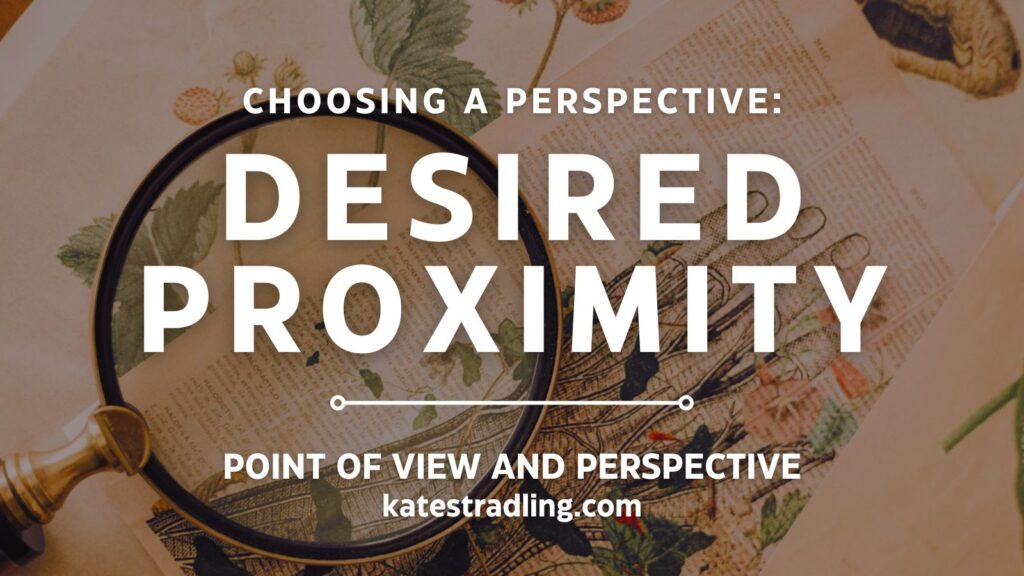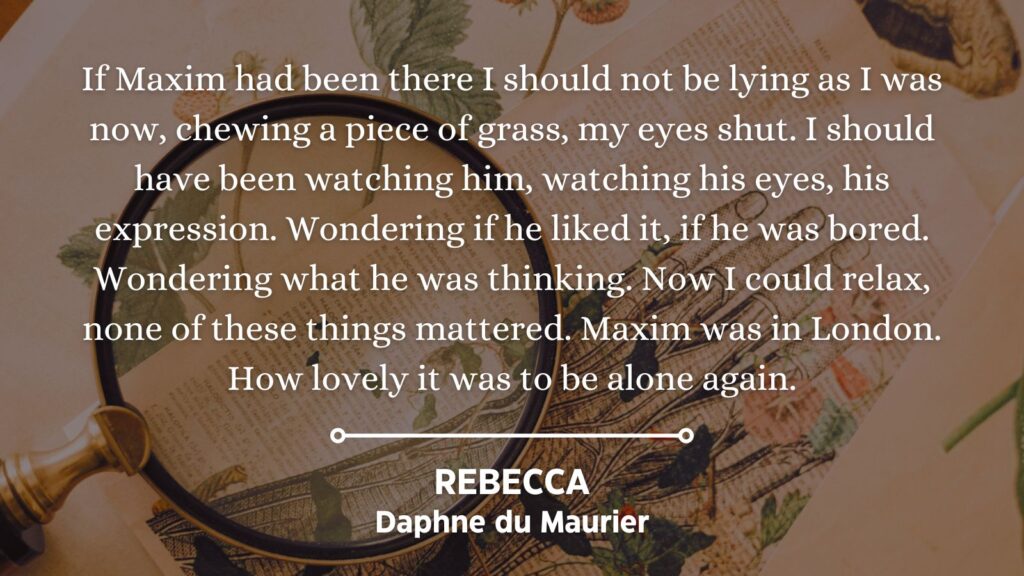Desired Proximity is our second consideration in the Choosing a Perspective sequence. This one focuses on the degree of closeness between the Reader and the Story, and it explores a spectrum of options.

The question for this topic is two-fold:
- How close a connection do you want your Reader to make with your Viewpoint Character?
- How deeply immersed do you want your narrative?
A Foregone Conclusion?
At first glance, especially according to modern writing trends, these questions might seem superfluous. Of course we want our Reader to connect with our Viewpoint Character(s). Of course we want them deeply immersed in the story.
But do we? Always?
No.
In fact, some genres inherently gravitate toward narrative distance. Mystery and Suspense gain tension in their unknown and omitted details. Westerns thrive on the “social outcast” trope. Satires and Social Commentaries step back to highlight their broader themes and messages.
Narrative distance can be a form of mercy in Thrillers, Horror, or Crime if the stories—or specific chapters—center on a villain’s perspective. It enables a safe boundary to convey information without traumatizing the Reader by planting them directly into a psychopath’s brain.
On the other side of this coin, narrative closeness establishes the Reader’s sympathies. It allows insight into motives and behaviors that we might objectively find repugnant. In Action & Adventure, it provides the Why for characters’ risky decisions. It supplies the emotional underpinnings of Romance and serves as an anchor point in second-world Fantasy.
Thus both distance and nearness fulfill distinct purposes, depending on the effect you intend your story to create.
Proximity through Technique
By its very nature, each Point of View style or technique we’ve reviewed draws the Reader in or pushes them away. Some are more obvious than others.
- First Person is inherently closer than Second or Third.
- Present Tense is nearer than Past.
- Objective Narration keeps its Reader at arm’s length or farther.
- Observational Narration throws its arms around the Reader’s shoulder and cracks a joke.
- Omniscient Narration maintains a cool politeness.
- Limited Omniscient pulls the Reader in close and whispers in their ear.
- Deep POV wraps around them with every available limb (and a few ancillary tentacles, hahaha) and tries to meld into a singularity.
- The Scenic and Panoramic Methods, in their stage settings and time skips, each remind the Reader that they’re reading instead of living in the story.
- The Epistolary Style and the Frame Story wedge a narrative structure between the Reader and the Plot.
- Stream of Consciousness both alienates and intrigues.
- Free Indirect Style unifies the Reader and the Viewpoint Character.
- Dual POV can simultaneously draw in with one Narrator and push away with another.
Aside from Deep POV and Objective Narration, which by definition lie at opposite ends of the Near-Far Spectrum, though, everything else can slide along this scale to some degree.
An Omniscient Narrator can get up close and personal. A First Person narrator can remain aloof.
Determining a story’s Desired Proximity, then, doesn’t automatically shoehorn it into a specific Point of View. Rather, it informs us how to use Point of View to achieve our desired effect. It introduces an extra level of story-craft for Authors to play in.
Playing with Proximity
Take, for example, REBECCA by Daphne du Maurier. This Gothic suspense novel details a young, naive woman’s whirlwind courtship and subsequent marriage to a wealthy and temperamental widower. Its First Person narrative should denote closeness, and from the start it draws the Reader in.
But we never even learn the Viewpoint Character’s given name. She’s simply Mrs. Maxim de Winter, and not even the first Mrs. Maxim de Winter, at that. We’re not her friends. She withholds as much as she confides.

This juxtaposition of narrative intimacy and distance reflects the themes of the novel, of a love and intimacy destroyed before it ever began, of a Narrator who desperately wants human connection but who also pushes it away to protect herself.
The Reader may learn the Narrator’s story and her feelings and the deepest desires of her heart, but they will never truly know her. Du Maurier’s skill with Point of View ensures that.
Conclusion
Determining a story’s Desired Proximity can indicate a specific Point of View style or technique, but it can also reveal how to subvert a style or technique’s expectations.
Up next: Unique Angle
Previous: Story Participation
Index Page: Point of View